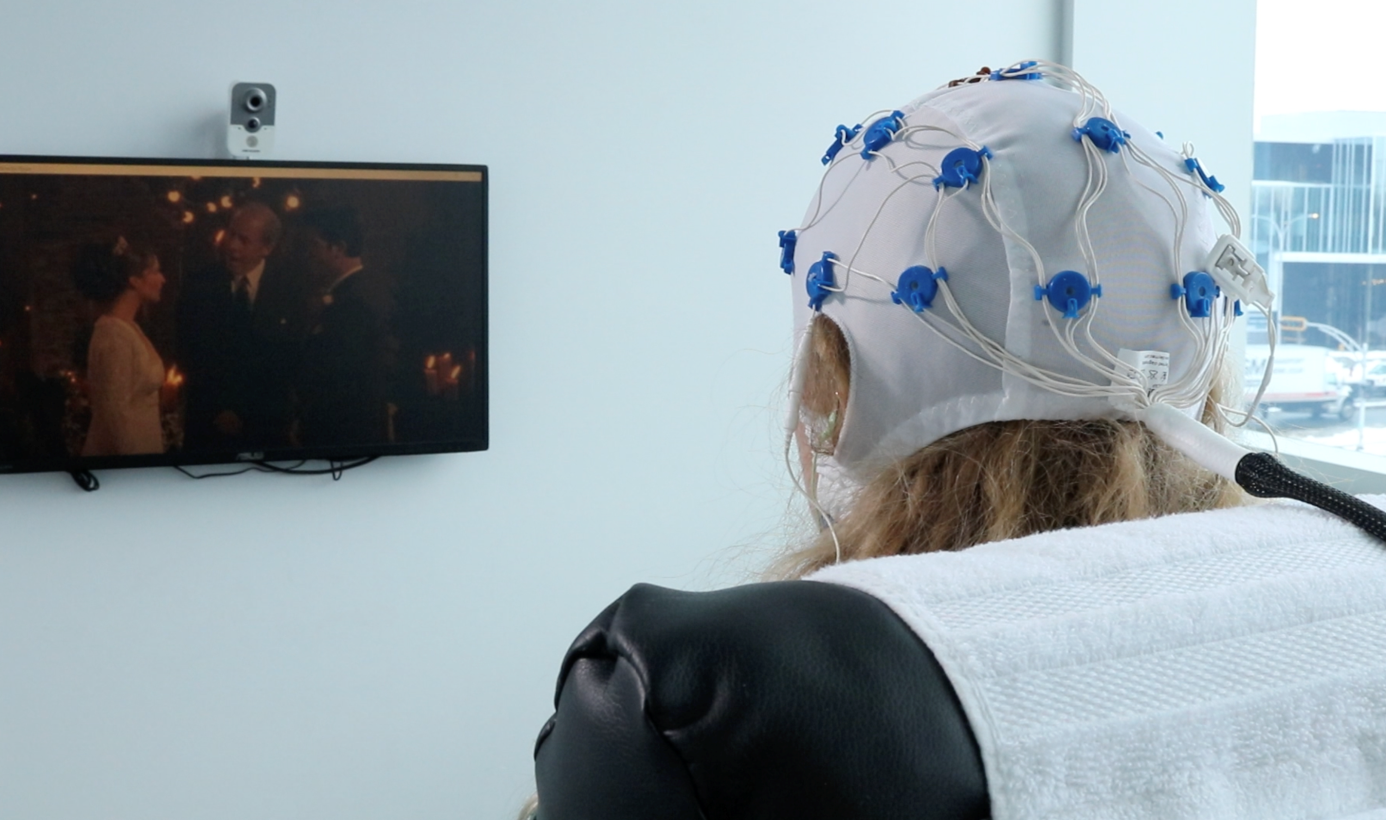
Many young people today face challenges that impact their mental well-being and concentration. These issues, sometimes worsened by the COVID-19 pandemic, may manifest as anxiety, sleep difficulties, lack of motivation, attention deficits, or even addictive behaviors. In response to this situation, neurofeedback is an innovative method that is gaining increasing attention. It involves brain training that helps a child or teenager better regulate their mental functions by strengthening their natural self-regulation abilities. Non-invasive and personalized, this type of support can improve concentration, mood, sleep, and many other aspects of cognitive functioning. Discover how neurofeedback can help with various symptoms and the concrete benefits it can offer in guiding your child toward greater calm and balance.
COVID-19: What Impact on Young People’s Mental Health?
The COVID-19 period profoundly disrupted the daily lives and well-being of young people in Canada. From the early months of the pandemic, with school closures, online learning, isolation, and reduced social contact, the effects on their mental health became evident.
As early as April 2020, just over 40% of young people aged 15 to 24 reported being in excellent or very good mental health. This marked a sharp drop from the 62% reported in 2018, representing the most significant decrease among all age groups. Additionally, 57%—more than half of youths aged 15 to 17—reported that their mental health was somewhat worse or much worse than before the physical distancing measures.
Several similar studies highlight the significant and rapid impact of the crisis on this vulnerable age group, both in Canada and worldwide.
State of Youth Mental Health in Canada in 2025
Data from the Québec Youth Health Survey of Secondary School Students (EQSJS), conducted by the Institut de la statistique du Québec through May 2023, provides a recent picture of the psychological challenges faced by young people. The survey reveals a concerning trend: high school students are experiencing worse psychological well-being than in the past.
The proportion of young people considered to have flourishing mental health dropped from 47% in 2016–2017 to 37% in 2022–2023. Nearly 41% of students also believe their mental health worsened because of the pandemic.
A significant proportion of young people have been diagnosed with a mental health disorder by a healthcare professional, and this rate has been rising since 2010–2011. Diagnoses include symptoms of anxiety or depression, as well as ADHD. Around 6% of students take medication for anxiety or depression symptoms, and nearly 16% take medication for ADHD symptoms. Eco-anxiety is also prevalent, with 66% of students reporting experiencing it sometimes, often, always, or almost always.
In many cases, girls are proportionally more affected than boys by these difficulties, reporting poorer overall mental health, more diagnoses (except for ADD/ADHD), and higher frequencies of eco-anxiety.
Changes in lifestyle and academic paths often accompany these psychological challenges. Student life has been disrupted, with young people reporting that they are falling behind in their studies, experiencing demotivation, and a decline in academic performance. Screen time has increased considerably, while physical activity has decreased for many. Sleep is also negatively affected. Young people with pre-existing mental health conditions before the pandemic may be especially vulnerable.
How Can Neurofeedback Help?
In the face of these many challenges, families are increasingly seeking practical solutions to help young people dealing with attention or cognitive difficulties. Neurofeedback is an approach that aims to train the brain to optimize its functioning. This solution is gaining more recognition because it provides a targeted way to address many common issues faced by youth:
-
For Academic Progress:
In a world where efficiency and performance are highly valued, the brain plays a central role. Difficulties with concentration, memory, or organization can significantly impact a young person’s academic path or daily activities. Neurofeedback is a form of brain training that can enhance brain function, even in individuals without specific disorders.
Studies have shown that training can target areas such as the frontal lobes, which are responsible for executive functions like planning and organization. Neurofeedback for cognitive performance can focus on several brain networks:
- Dorsal (sustained) attention: to improve the ability to stay focused on a task
- Ventral (divided) attention: to manage multiple streams of information simultaneously
- Working memory: to enhance memory and speech fluency
Reported benefits from neurofeedback sessions can include:
- Improved concentration
- Greater capacity for multitasking
- Enhanced memory
- Better problem-solving skills
-
In Cases of ADD/ADHD
Attention Deficit Disorder with or without Hyperactivity (ADD/ADHD) is a common neurodevelopmental condition in youth. It manifests through difficulties with attention, concentration, organization, planning, and sometimes physical or mental hyperactivity and impulsivity.
These symptoms are often linked to suboptimal functioning in specific brain regions or networks, particularly the frontal lobes and attention networks. High levels of anxiety may also contribute to attention difficulties. ADD/ADHD can cause significant challenges at home and in school.
Neurofeedback helps measure brain activity to identify areas or connections that may be contributing to symptoms. Training then targets the identified networks—such as sustained attention, divided attention, working memory, or executive functions. If other issues like anxiety are also present, additional circuits can be trained.
Neurofeedback is considered an effective treatment for attention-related challenges. The improvements are typically long-lasting and may even continue to develop after training ends.
-
For Sleep Difficulties
Sleep issues, such as insomnia, are common and can have significant consequences on a young person’s concentration, mood, memory, and overall health. Brain activity may be one of the underlying causes. For some, excessive brain activity makes it hard to fall asleep and prevents restful sleep. For others, a lack of the slow brainwaves needed for deep sleep can be observed.
Neurofeedback trains the brain to return to a more optimal level of activity. The process may involve calming hyperactivity or encouraging the slower frequencies necessary for sleep.
Results observed from this type of training can include:
- Falling asleep more quickly
- Fewer nighttime awakenings
- Improved sleep quality
- Easier wake-ups in the morning
- Reduced fatigue
-
Anxiety
Whether it’s excessive worry (generalized anxiety), intense fear in certain situations (phobias, social anxiety, or agoraphobia), or panic attacks, anxiety can significantly affect emotional and physical well-being. It can disrupt family, school, and social life.
Anxiety is often associated with hyperactivity in specific brain areas, such as the amygdala, and suboptimal function in other regions involved in regulating it. Neurofeedback measures brain activity using qEEG to identify anxiety markers and the corresponding brain regions involved.
Training targets these areas simultaneously and enhances communication between them to improve anxiety regulation. Most clients report noticeable anxiety reduction after 5 to 7 sessions. The benefits are usually long-lasting.
-
For Depression
Depression is marked by persistent sadness and/or loss of pleasure, negative thoughts, low self-esteem, and pessimism. It may also be accompanied by sleep and appetite disturbances, trouble concentrating, fatigue, and in severe cases, suicidal thoughts.
Beyond the psychological components, research suggests that underactivation of specific brain areas—especially the left frontal lobe, associated with positive emotions—and poor communication between the frontal lobes and other regions, may be linked to depression.
In neurofeedback assessment, special attention is given to the activity in the frontal lobes and their communication with other brain regions. Training utilizes advanced equipment to stimulate the left frontal lobe and strengthen its connections with other brain areas.
Mood and mindset improvements are often noticed after 5 to 6 sessions. Reported outcomes may include:
- A more positive mood
- Increased motivation
- Enhanced sense of well-being
- Reduced fatigue
- Better emotional regulation
3 Frequently Asked Questions from Parents About Neurofeedback
1- Is neurofeedback painful?
No. The electrodes placed on the head simply detect signals emitted by the brain. They do not send any electrical current or magnetic impulses. Only a small amount of conductive gel is applied to ensure electrical contact between the skin and the electrode. Neurofeedback is entirely painless.
2- Is it a long process?
Improvements in brain activity can be observed quickly—sometimes after just a few minutes of training. Clients typically start noticing real improvements in their abilities, behaviors, or sensations after 5 to 7 sessions, or between 4 and 5 sessions for depression. To reach significant progress, a typical protocol includes around ten sessions per targeted brain circuit. The entire program typically consists of 12 training sessions.
3- Are there any side effects?
Neurofeedback training usually has few side effects. Some temporary fatigue may be felt in the hours following a session due to the mental work involved. In sporadic cases, as the brain reorganizes itself to function more optimally, progress toward a more regulated state may be accompanied by temporary, mild discomfort—such as an increase in vivid dreams.
Conclusion
Your child or teen’s mental well-being deserves your full attention, and neurofeedback offers a valuable path toward better balance. If you have doubts or concerns, the best first step is to consult a professional who can provide a diagnosis or assess your child’s specific needs. However, note that an official diagnosis is not required to begin neurofeedback training: using a quantitative EEG (qEEG), specialists can observe the areas of the brain that need adjustment and create a personalized training protocol. This targeted approach aims to improve both brain function and overall well-being. Don’t hesitate to take the first step—you will be supported with professionalism and care.




